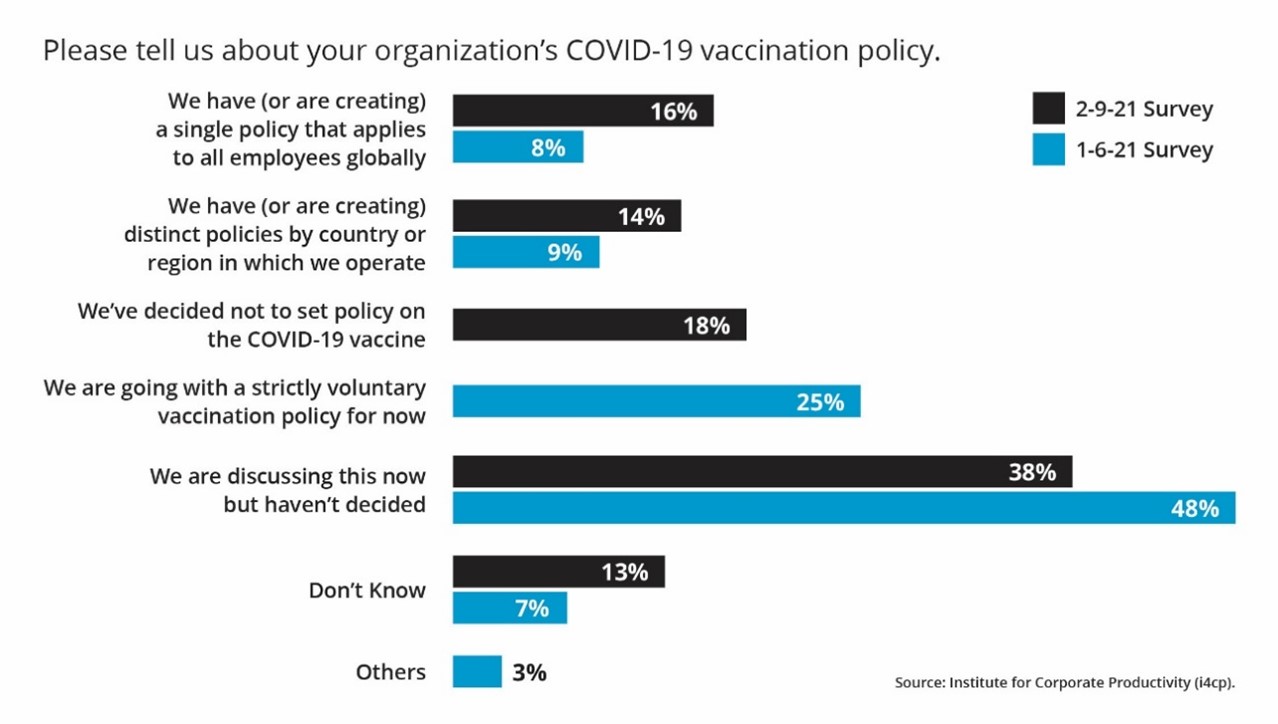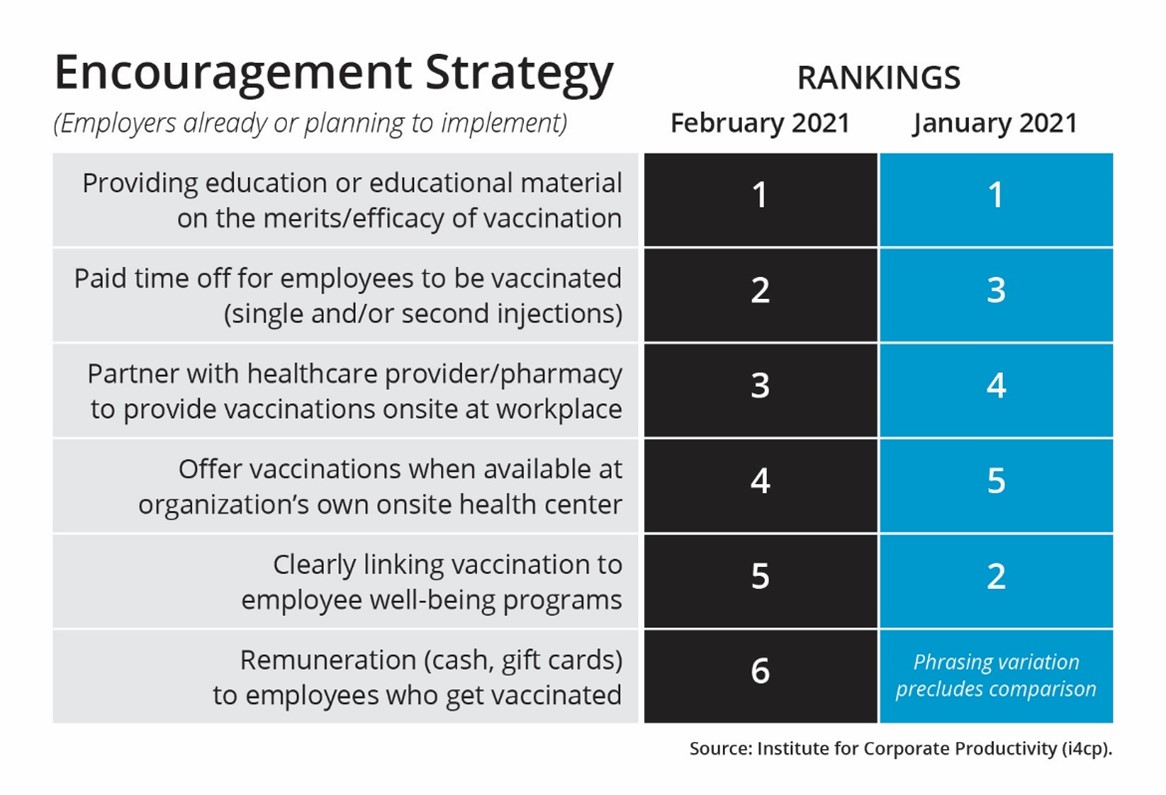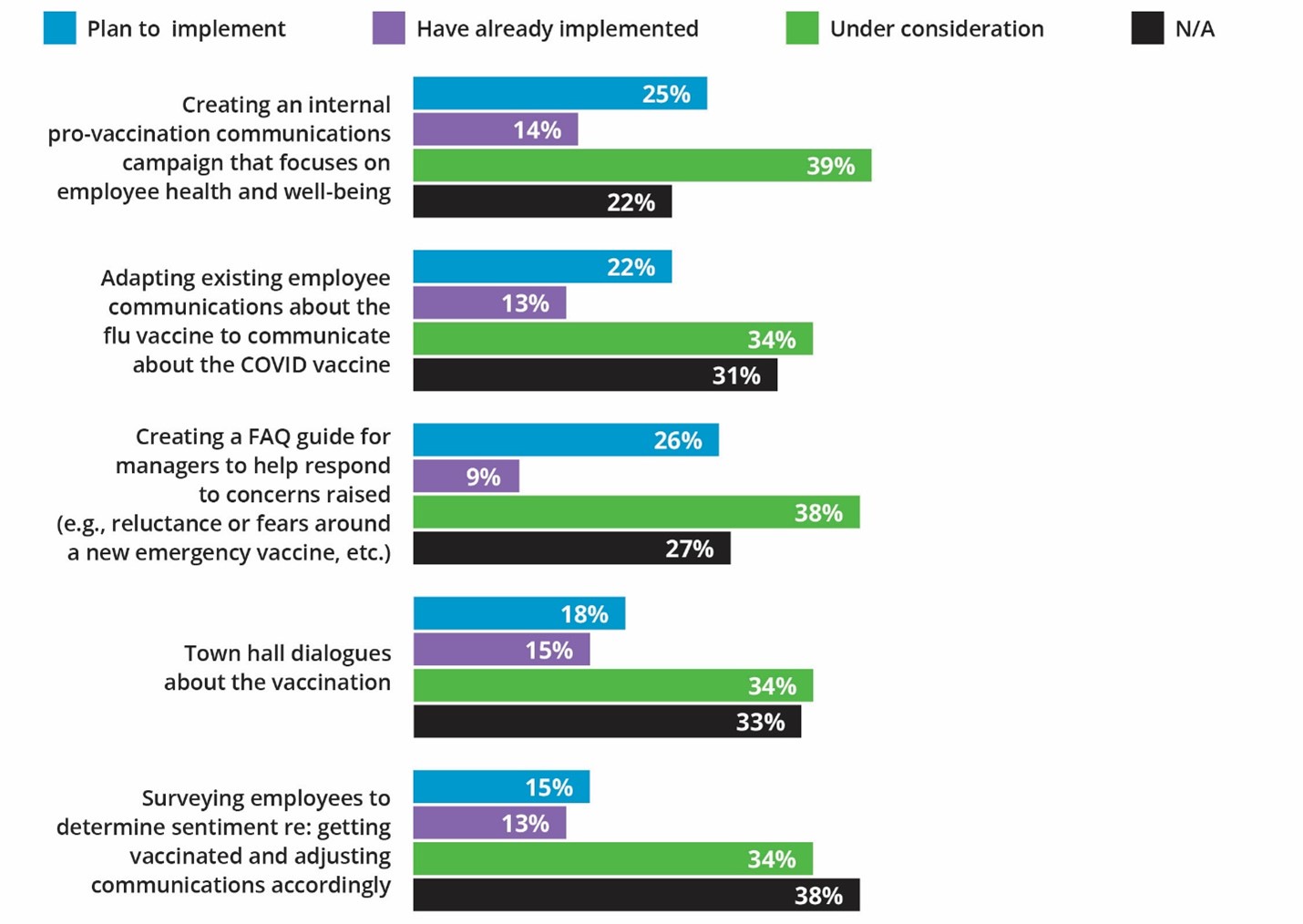February Employer Insights: Most Encourage Employee Vaccinations, Some Offer Incentives

Just-in results from the latest i4cp survey confirm that employers continue to prefer encouraging, and not requiring, employees to receive COVID-19 vaccinations.
Most of the just over 400 respondents (62%) surveyed last week say they encourage employees to be vaccinated or plan to; only 4% require or plan to require the injections. In both cases, 30% of leaders say they’re still considering their options.
In January, i4cp’s first survey on this topic—The COVID-19 Vaccine & The 2021 Workplace—explored business leaders’ opinions about vaccinations for their workforces. With our post-outbreak world shifting so rapidly, and vaccination debates challenging individuals, businesses, and governments, alike, we’re updating our research frequently to provide insights on the evolving situation.
As the year began, few leaders (5%) had an appetite for mandating that their employees be vaccinated (though four in 10 said they were thinking about it). At the same time, two-thirds of those surveyed in January planned to encourage vaccinations when widely available to the public, and another 19% were considering it. Overall, it was clear that many were in no rush to make decisions, instead choosing a wait-and-see approach. The same holds true a month later.
When it comes to formal policies on vaccination, the January survey found 48% of business leaders discussing policies, but undecided. In February, that figure has declined to 38% reporting that they are still in discussions, while an additional 18% say they’ve decided not to set a policy on vaccinations.
Formal policies are in place in three in 10 organizations represented in the February survey. Those are almost evenly split between a single policy applicable to all employees globally (16%) and distinct policies for countries/regions of operation (14%).
In organizations that have policies in place, 26% address vaccination accommodation requests, and 16% already or will include provisions related to adjusting job or work requirements such as locations or work teams. Minimal numbers of respondents (fewer than 8%) reported policies that referenced proof of vaccination for employees returning to workplaces, regular testing requirements of unvaccinated workers, or workplace adaptations to separate workspaces of vaccinated and non-vaccinated employees.
Organizations Are Experimenting with Incentives
With encouragement of employee vaccinations continuing to be the chosen path of most organizations at present, employers are curious to know how their peers are accomplishing that strategy.
In both surveys, i4cp asked about six types of incentives organizations might use to promote vaccinations. Consistently ranking top-of-list (and increasing from 39% to 50% of respondents implementing or about to) is a relatively easy-to-accomplish effort—providing education or educational material on the merits/efficacy of vaccination.
Beyond that leading action, the new data reflects shifts in choices about incentives, with paid time off for workers to be vaccinated (31% of respondents already implementing or planning to) and onsite vaccination solutions rising in rank while linking vaccinations to companies’ existing well-being programs declined significantly as a favored strategy.
Communications Efforts Are Becoming More Organized and Expansive
Effective internal communications are critical to the success of any business objective, and actively encouraging employees to be vaccinated against COVID-19 is no exception.
Not surprisingly, the January survey—which fielded concurrently with the advent of vaccine approvals by the FDA—found companies most likely to report that they were leveraging the fastest option at their disposal: one in four respondents were adapting existing employee communications assets about flu vaccines to provide messaging about COVID vaccines instead.
After nearly a month during which vaccines gradually became more widely available (albeit with ongoing supply issues) and businesses had time to begin more expansive approaches, the top choice of communication strategies to encourage vaccination shifted: 38% of survey participants say their current (or planned) top effort is creating an internal pro-vaccination communications campaign that centers on employee health and well-being.
Adapting existing communications materials remains an ongoing effort, but the broader focus is reflected by 35% of respondents who say they are, or will be, putting together FAQ guides for managers’ use in responding constructively to workers’ vaccination concerns.
Top 5 communication strategies organizations are using to encourage employee vaccinations
Source: Institute for Corporate Productivity (i4cp)
While i4cp’s second vaccination survey reveals some subtle changes in only a month’s time, we anticipate more shifts in employers’ strategies as greater numbers of people receive the vaccines and the social and business landscapes continue to evolve.
As we have since the outbreak of the pandemic in 2020, i4cp will continue to monitor and explore emerging trends and their implications for business leadership and organizational performance.
Carol Morrison is a Senior Research Analyst at i4cp








